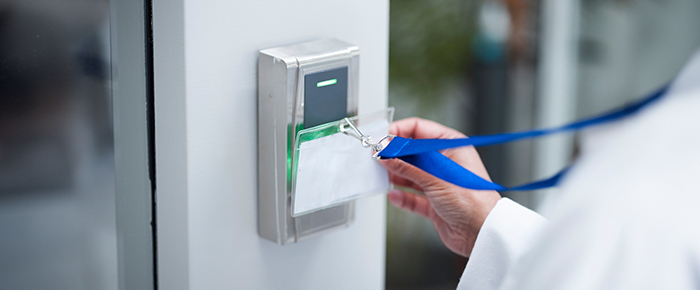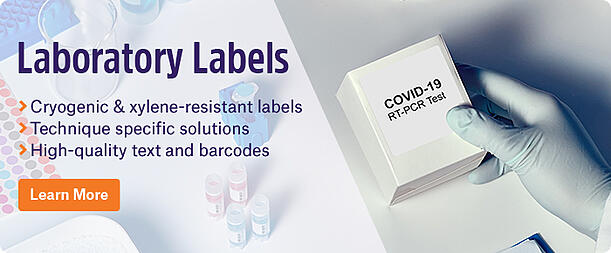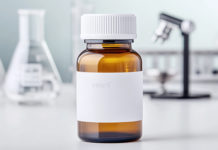Lab security is important for every kind of lab, from medical labs, which need to keep patient identities confidential, to pharmaceutical labs that face continual risks of theft or misuse. Even academic labs often process sensitive samples that require a high level of security. Here are three areas where labels can help keep your lab secure, and safeguard your samples and data from being tampered with by outside parties.
Safeguard sample integrity
For many samples, the container must remain sealed, either during transit when shipped or before the right person arrives to open and manipulate it. Tampering with samples, whether through legal or illegal means, often results in contamination and the loss of the sample, damaging the credibility of the processing facility. This is especially important for forensic labs, where the results of blood and swab tests can alter the course of legal proceedings.
To ensure that containers are not tampered with, tamper-evident labels add a layer of protection by tearing into pieces upon any attempt to remove them. These labels are produced to fit precisely on a given container, whether it be a tube, vial, or storage box. Thus, any attempt to open the container will become immediately visible allowing the owner to verify that it has been compromised. In addition, they alert those who might unlawfully tamper with samples that their actions will remain visible, deterring them from opening the container beforehand.
Protect sensitive data
For identity-protected samples, which can include those containing patient information or confidential experimental data, information must remain secure even when the sample is thrown out. Two kinds of labels provide a means to remove sensitive information from containers:
- Direct-thermal labels: These labels are coated with a leuco dye that turns black when heated. Printed with a thermal printer, the information on the label can be permanently obscured by merely autoclaving the sample, which turns the entire label black.
- Blackout labels: These labels are produced with an opaque material that conceals information, allowing you to place them over the existing label to obscure the existing data. Permanent blackout labels are recommended for this purpose.
Mitigate sample loss
One of the most challenging tasks facing labs is sample location management. Understanding where each individual container is located and tracking its movement during handling is paramount to preventing specimen loss and reducing time lost needlessly searching for specific samples or reagents. This is especially crucial for large labs that store and utilize thousands of samples per day.
To reduce the likelihood of sample loss, a thorough digitalized laboratory management infrastructure is recommended. This often involves the use of a laboratory management information system (LIMS) alongside electronic notebooks (ELNs) and other cloud-based systems that manage inventory and sample use across all workflows. These systems can monitor the exact location of every sample and reagent while also providing other important information, including processing dates, sample origins, lot and batch numbers, and volumes, among other data.
A LIMS is dependent upon barcode and/or RFID labels to function. Each sample should be labeled with a printed code that can be scanned and updated within the LIMS. Therefore, not only do these labels provide sample security within the LIMS, they also reduce the likelihood of human errors, as each individual item must be scanned accordingly prior to initiating a new step in the workflow.
LabTAG by GA International is a leading manufacturer of high-performance specialty labels and a supplier of identification solutions used in research and medical labs as well as healthcare institutions.




